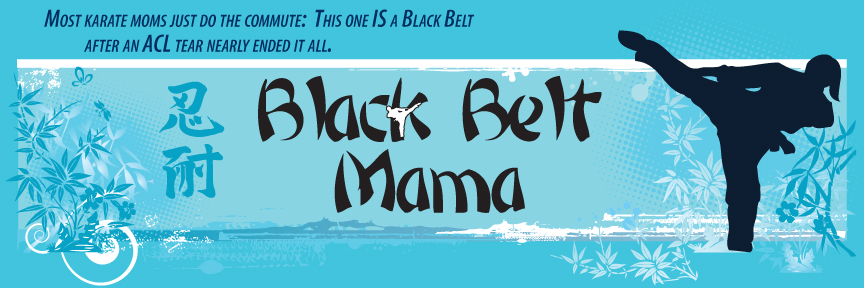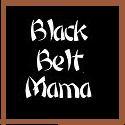March 16, 2008
Why Your Child is Not a Black Belt
By: Ann-Marie K. Heilman, Kyoshi
Okinawa Kenpo Karate Kobudo
Heilman Karate Academy, Inc.
To the uninformed person on the street or perhaps the new student in the dojo, all black belts may seem alike. The parent of a child whose classmate at school is an 8-year-old third degree black belt may have the feeling, “What is holding up my child’s progress?” Are all schools alike? Is there one course of study that, when followed will end with the coveted “black belt?” Or is one school easier than another? Is one school really that different from another? The answer to a traditionalist is a resounding YES! We need to do some fact finding.
In the Okinawan/Japanese systems, wearing a black belt is a sign of maturity; in other words, the student has demonstrated mature physical growth, knowledge of the physical basics of their system, has demonstrated over time an ability to make sound judgments thus revealing mental maturity. None of this is accomplished very quickly even if the student is an adult.
When we discuss techniques in class we judge a student’s ability and knowledge and expertise of technique compared to an attacker. In adults, body size usually does not change drastically. With children’s growing bodies techniques must change as their bodies change; their arm and leg length for example, as well as their height, will render some techniques useless or perhaps better depending upon their current physical size. This generally is not true for adults who reach their maximum growth by the late teens and will stay there for years.
When we consider adult versus child judgment or mental maturity we find a difference. Why consider sound judgment as a marker of black belt eligibility? Think about self-control or quick judgment in a street situation. There are adults who should not study martial arts. They haven’t learned self-control. They lose their temper, use martial arts as a "power game" over others or do not use good judgment in everyday matters. Certainly martial arts can provide them with an opportunity to learn these virtues but that depends on the quality of instruction, which is factor of the school they attend. And all schools are not alike.
In terms of the definition of a "black belt" there are many different ideas. Some systems promote individuals who are good athletes and can kick high, punch hard, and/or win trophies. There is nothing wrong with this idea, but a traditional view of the rank implies mental maturity. This does not come early in a person’s life but develops slowly over time.
We know of many kids who are excellent in the physical aspects of their art and we might call them "junior black belts” to recognize their proficiency, but they are still children. Can they teach? Sometimes. I have known a few children who can convey information better than some adults. Can they make sound judgments about people? Sometimes. But not always. That takes experience and maturity. Should we "hold them back" until they are 16? Usually, but not always. At many traditional dojos those individuals who demonstrate ability can be recognized by awarding them a junior black belt. However, full ranking is generally held off until maturity has been demonstrated and that does not come easily or quickly.
Curriculum is another matter. As a traditional dojo, the HKA offers a full program of okinawan karate and Kobudo (weapons). From basics (stances, kicks, blocks, strikes), through self-defense, sparring, to participating in demonstrations, tournaments, and dojo events – we cover a lot of material.
Sport karate is a new development that came into existence in America in the "60’s. It has blossomed and grown into a billion dollar business. It is a lot of fun and those who have accumulated a number of trophies will tell you the great feeling of accomplishment they have when they win. But sport karate is different from traditional karate where "points" don’t matter; your performance and development as a person in mind, body, and spirit does. There is much more to say on this matter and we will continue the discussion in future blogs.
























This is something that comes up at our dojo a lot. We have two different styles, under two different sets of teachers, and two different sets of promotion standards. One side (the one I’m in) will not promote someone to black belt (not even junior), until they’re at least sixteen, and has lengthy time-in-belt requirements, such that it would actually be hard to hit black before sixteen unless the child started really early. The other side has at least half-a-dozen full black belts twelve or under, one of them a third dan.
When we got together in one spot, we were expecting the people in my discipline to kick about the slow promotion and for there to be discontent among the kids for their respectively lower ranks. Instead the reaction has been the opposite. The faster promoting side’s students have been expressing jealousy over our “really earned” belts and ranks, while our kids have been thrilled beyond measure at their ability to hold their own and sometimes beat handily, kids many ranks higher.
It’s been a learning experience all ’round.
My friend’s 11 yo son belongs to a “McDojo” and is a black belt after 2 years in training. No doubt he is good – but a black belt? All of the points made by Ann-Marie K. Heilman, Kyoshi, seem so very true to me. I am still new to Martial Arts and am still a white belt after almost a year in (we only meet once per week) but it is all about the journey to me – not the resulting belt color. The owner of the McDojo our friends’ son belongs to is very proud of himself and shows it by putting posters of himself all over their dojo walls, windows, telephone book ads, even the back of the student gi’s! He gouges pricewise. He promotes his church to his students. My friends are either oblivious to this or more likely just overlook it because their son is good at his art and enjoys it. I wish there were some kind of governing organization over dojos the way their is an “insurance board” or the like to watch over other businesses.
2 years to Black Belt, I find that hard to fathom.
I hate to quote the Karate Kid, but the line about having a belt meaning that you don’t need a rope to hold up your pants comes to mind here.
I have been training in Aikido for almost 3 years, and am at 2nd Kyu. If I keep working hard and things go well, I hope to test for Shodan in 2 more years.
I find Perpetual Beginner’s comments especially telling as I think it shows that folks know when they are kidding themselves even if they don’t always admit it.
I guess we just need to be aware that the color of the belt needs to be weighed against who awarded it and what it was awarded for.
My daughter got her black belt at age 9 after 5 hard years of training. They worked the kids just as hard as the adults. They had the same requirements to get their black belt as the adults. It was by far one of the hardest things she’ll probably ever do. We’re realistic in that we know she couldn’t take on an adult but it was something acconplished by hard work and determination. Most of the kids failed. At times I wished we belonged to a McDojo but when all was said and done I was so glad this belt was earned and not “given”.
Although I’m not in the martial arts, this post is of particular interest to me as I watch my nieces and nephews work towards their belts very quickly-the oldest is 7. My father, a 3rd degree Black Belt in TKD, teaches and takes classes from a non-profit school (you only pay a few dollars a year to cover the insurance cost) and they have an age policy before you can even begin class. His school is so very different from the school my nephews go to. Dad’s is very traditional with much emphasis on the mental maturity aspect. The nephew’s school is all about the sport. Nothing wrong either way (the nephews are getting much needed exercise). Interesting post!